Welcome to our article on PCR Recyclable Stretch Film, a revolutionary packaging solution that combines sustainability and performance. In today’s world, where environmental concerns are at the forefront of many industries, finding innovative ways to reduce waste and promote recycling is crucial. PCR Recyclable Stretch Film offers a sustainable alternative to traditional stretch film by incorporating post-consumer recycled (PCR) materials into its production.
As the demand for eco-friendly packaging continues to grow, PCR Recyclable Stretch Film has emerged as a game-changer in the industry. This film is made from a blend of PCR materials, which are derived from post-consumer waste, such as plastic bottles and other plastic packaging. By utilizing these recycled materials, PCR Recyclable Stretch Film helps to reduce the consumption of virgin plastic and minimize the environmental impact associated with its production.
One of the key advantages of PCR Recyclable Stretch Film is its ability to maintain the same level of performance as traditional stretch film while reducing its carbon footprint. Through advancements in manufacturing processes and material technology, the film achieves a 35% reduction in carbon emissions compared to traditional stretch film. This significant reduction in environmental impact makes PCR Recyclable Stretch Film a sustainable choice for businesses looking to minimize their carbon footprint and contribute to a circular economy.
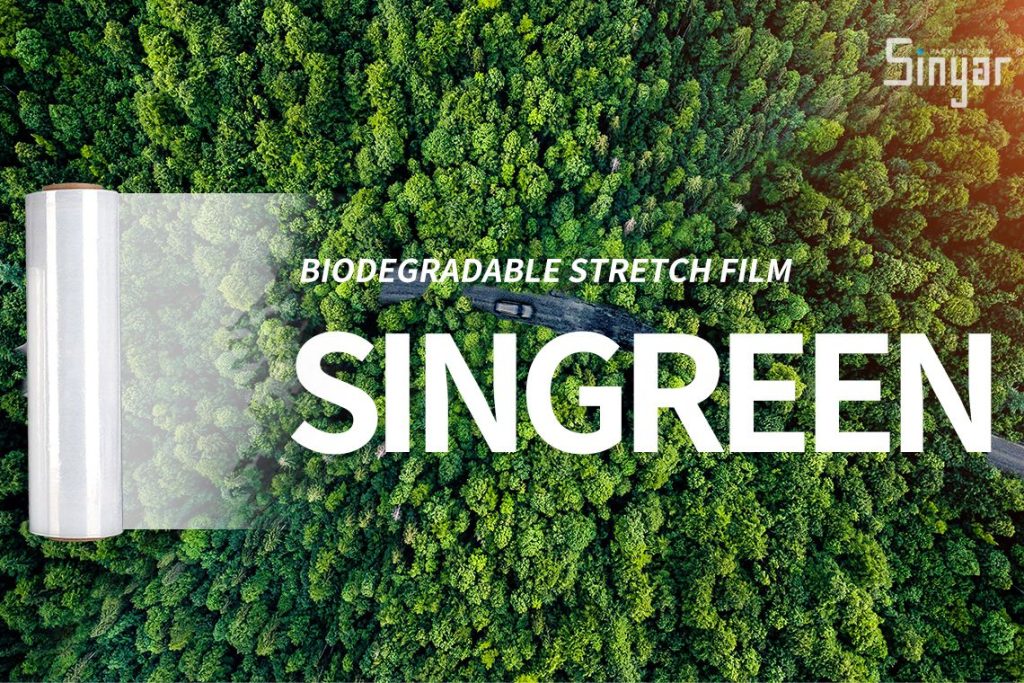
PCR Recyclable Stretch Film finds applications across various industries, including logistics, warehousing, and transportation. Its excellent stretchability and load-holding capabilities make it ideal for securing and protecting palletized goods during transit. Additionally, the film’s high tear resistance and puncture strength ensure that products remain intact and undamaged throughout the supply chain.
Manufacturing PCR Recyclable Stretch Film involves a meticulous process that combines recycled materials with advanced additives and technologies. These additives enhance the film’s mechanical properties, such as tensile strength and elongation, ensuring its suitability for a wide range of packaging applications.
As the global focus on sustainability intensifies, PCR Recyclable Stretch Film is expected to witness significant growth in the coming years. With advancements in recycling technologies and increased awareness of the importance of sustainable packaging, more businesses are turning to PCR Recyclable Stretch Film as a viable solution. This trend not only aligns with environmental goals but also helps companies meet consumer demands for eco-friendly products.
In the following sections of this article, we will delve deeper into the benefits, applications, manufacturing process, and environmental impact of PCR Recyclable Stretch Film. We will also explore future trends and developments in this exciting field. Stay tuned to discover how PCR Recyclable Stretch Film is revolutionizing the packaging industry and paving the way for a greener future.
Overview of PCR Recyclable Stretch Film
PCR (Post-Consumer Recycled) recyclable stretch film is a sustainable packaging solution that is gaining popularity in various industries. It is a type of stretch film that is made from recycled plastic materials, specifically post-consumer plastic waste. This innovative packaging material offers several advantages over traditional stretch film, making it an attractive choice for businesses looking to reduce their environmental impact.
PCR recyclable stretch film is produced using a process that involves collecting plastic waste from consumers, such as used plastic bottles or packaging materials, and processing it into new film. The collected plastic waste is cleaned, sorted, and then melted down to create pellets or flakes. These pellets or flakes are then used as the raw material for manufacturing the stretch film.
One of the key benefits of PCR recyclable stretch film is its reduced carbon footprint. By utilizing post-consumer plastic waste, the production of PCR stretch film results in a 35% reduction in carbon emissions compared to traditional stretch film made from virgin plastic. This significant reduction in carbon footprint contributes to the overall sustainability of the packaging industry.
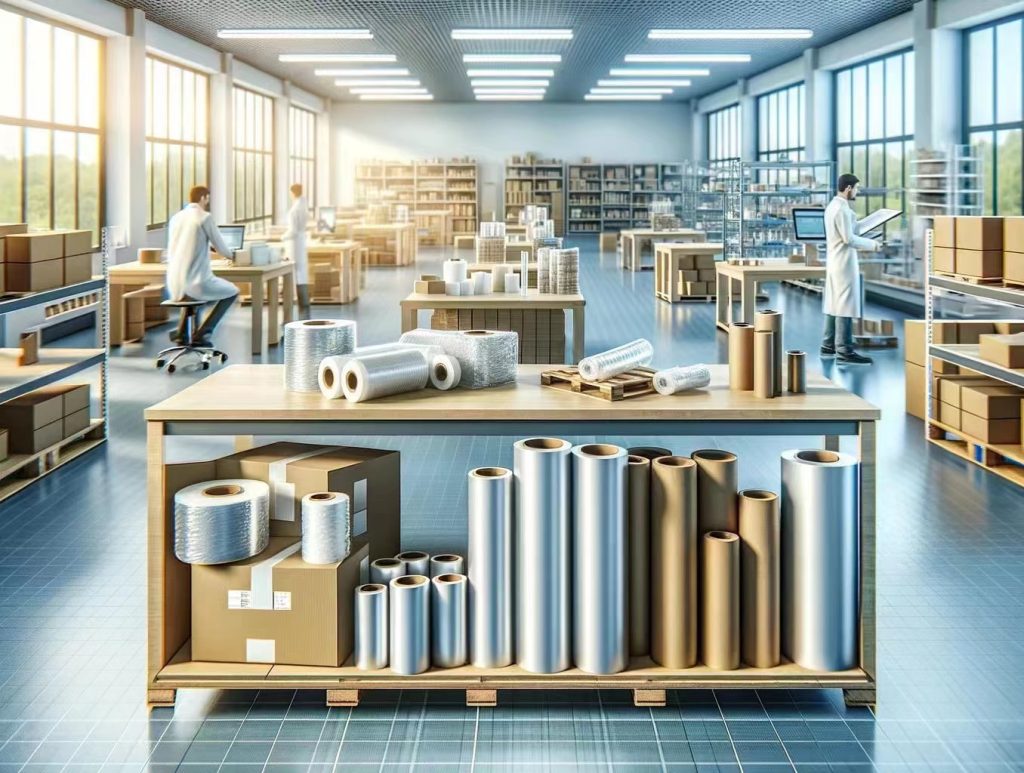
In addition to its environmental benefits, PCR recyclable stretch film maintains the same thickness and performance as traditional stretch film. This means that businesses can use PCR stretch film without compromising the quality or functionality of their packaging. It offers excellent mechanical and packaging performance, including stability and optical properties.
PCR recyclable stretch film is versatile and can be used in various applications across different industries. It is commonly used for pallet wrapping, bundling, and securing goods during transportation and storage. The film’s ability to stretch and cling tightly to objects effectively protects against dust, moisture, and damage.
The manufacturing process of PCR recyclable stretch film involves advanced technologies and materials. Companies collaborate with experts in mechanical recycling to develop and produce the film. This collaboration ensures that the film meets the industry’s requirements for mechanical and packaging performance, as well as optical properties and printability.
As the demand for sustainable packaging solutions continues to grow, PCR recyclable stretch film offers a promising solution for businesses seeking to reduce their environmental impact. It provides a way to incorporate recycled materials into packaging without compromising performance or quality. With its reduced carbon footprint and versatility, PCR recyclable stretch film is poised to play a significant role in the future of sustainable packaging.
In conclusion, PCR recyclable stretch film is a sustainable packaging solution that utilizes post-consumer plastic waste to create a high-quality film. Its reduced carbon footprint, versatility, and performance make it an attractive choice for businesses looking to reduce their environmental impact. As the demand for sustainable packaging continues to rise, PCR recyclable stretch film is expected to play a crucial role in the future of the packaging industry.
Benefits of Using PCR Recyclable Stretch Film
When it comes to packaging and shipping, businesses are constantly seeking ways to reduce their environmental impact. PCR (Post-Consumer Recycled) recyclable stretch film offers a sustainable solution that not only helps companies meet their sustainability goals but also provides several benefits.
1. Environmental Sustainability
One of the primary benefits of using PCR recyclable stretch film is its positive impact on the environment. By incorporating post-consumer recycled materials into the production process, this film helps reduce waste and reliance on virgin materials. This, in turn, conserves natural resources and reduces energy consumption, making it an environmentally friendly choice.
2. Cost Savings
In addition to its environmental benefits, PCR recyclable stretch film can also lead to cost savings for businesses. By using recycled materials, companies can reduce their raw material costs compared to traditional stretch films. Moreover, the use of PCR materials can often be more cost-effective than other sustainable alternatives, making it an attractive option for businesses looking to reduce expenses.
3. Performance and Durability
PCR recyclable stretch film offers excellent performance and durability, ensuring that products are securely packaged and protected during transportation and storage. Despite being made from recycled materials, this film maintains the same strength and stretchability as traditional stretch films, providing reliable packaging solutions.
4. Versatility
PCR recyclable stretch film is available in various sizes and thicknesses, making it suitable for a wide range of applications. Whether it’s pallet wrapping, bundling, or securing irregularly shaped items, this film can be customized to meet specific packaging needs. Its versatility allows businesses to use it across different industries, from manufacturing and logistics to retail and distribution.

5. Customer Perception and Brand Image
In today’s market, consumers are increasingly conscious of the environmental impact of the products they purchase. By using PCR recyclable stretch film, businesses can demonstrate their commitment to sustainability and appeal to environmentally conscious consumers. This can enhance their brand image and reputation, leading to increased customer loyalty and market competitiveness.
6. Regulatory Compliance
As governments and regulatory bodies worldwide impose stricter regulations on packaging waste and environmental sustainability, using PCR recyclable stretch film can help businesses comply with these requirements. By adopting sustainable packaging solutions, companies can avoid potential fines and penalties while demonstrating their commitment to responsible business practices.
In conclusion, PCR recyclable stretch film offers numerous benefits for businesses seeking sustainable packaging solutions. From environmental sustainability and cost savings to performance and versatility, this film provides a reliable and eco-friendly option for packaging and shipping needs. By incorporating PCR materials into their operations, companies can reduce their environmental footprint while meeting customer expectations and regulatory standards.
Applications of PCR Recyclable Stretch Film
PCR recyclable stretch film is a versatile packaging material that offers numerous benefits in various applications. Its unique properties make it suitable for a wide range of industries and purposes. Let’s explore some of the key applications of PCR recyclable stretch film:
Pallet Wrapping: PCR recyclable stretch film is commonly used for securing and stabilizing palletized goods during transportation and storage. Its excellent stretchability and cling properties ensure that the load remains intact and protected from damage. Whether it’s in warehouses, distribution centers, or retail environments, PCR recyclable stretch film provides a cost-effective and sustainable solution for pallet wrapping.
Product Packaging: Many industries rely on PCR recyclable stretch film for packaging their products. From food and beverage to electronics and consumer goods, PCR recyclable stretch film offers reliable protection against dust, moisture, and tampering. Its ability to conform to different shapes and sizes makes it an ideal choice for wrapping items of various dimensions.
E-commerce and Fulfillment Centers: With the rise of e-commerce, the demand for efficient and sustainable packaging solutions has increased. PCR recyclable stretch film is widely used in e-commerce and fulfillment centers to secure individual items or multiple products in a single package. It ensures that the goods arrive at their destination in optimal condition while minimizing waste and reducing environmental impact.
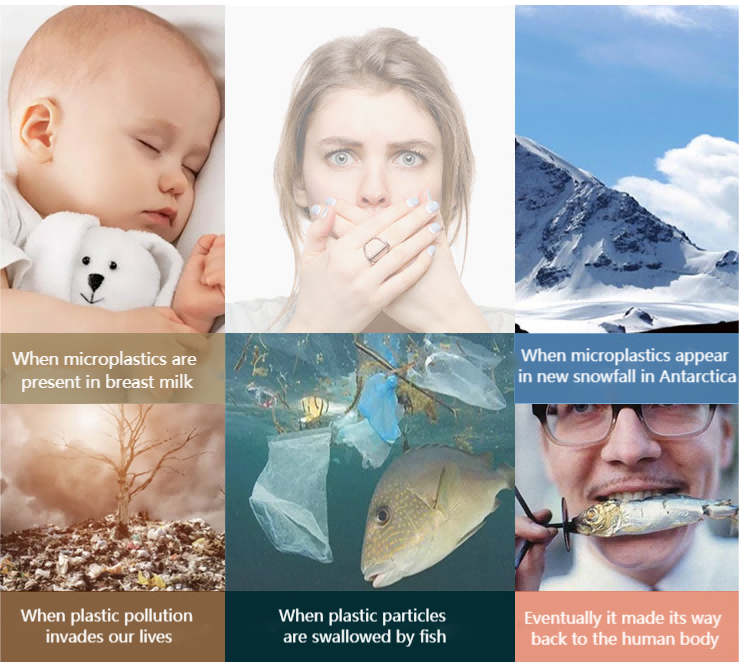
Industrial Applications: PCR recyclable stretch film finds extensive use in industrial settings, such as manufacturing facilities and construction sites. It can be used to protect machinery, equipment, and other valuable assets from dust, scratches, and moisture. The film’s strength and durability make it suitable for heavy-duty applications, providing long-lasting protection.
Greenhouse and Agriculture: PCR recyclable stretch film is also utilized in the agriculture industry, particularly in greenhouse operations. It can be used to cover and protect crops, providing insulation and creating a controlled environment for optimal growth. The film’s transparency allows sunlight to penetrate while retaining heat and moisture, promoting healthy plant development.
Waste Management: PCR recyclable stretch film plays a crucial role in waste management and recycling processes. It is used to bundle and secure recyclable materials, such as paper, cardboard, and plastic, for efficient collection and transportation. The film’s recyclability ensures that it can be reprocessed and used again, contributing to a circular economy.
In conclusion, PCR recyclable stretch film offers a wide range of applications across various industries. Its versatility, sustainability, and cost-effectiveness make it an attractive choice for packaging and protecting goods. From pallet wrapping to product packaging, e-commerce, industrial applications, agriculture, and waste management, PCR recyclable stretch film provides a reliable and eco-friendly solution. By incorporating PCR materials into stretch film production, companies can contribute to a more sustainable future while meeting their packaging needs.
Manufacturing Process of PCR Recyclable Stretch Film
The manufacturing process of PCR recyclable stretch film involves several steps to ensure the production of high-quality and sustainable packaging material. Here, we will explore the key stages involved in the production of PCR recyclable stretch film.
1. Collection and Sorting of Post-Consumer Recycled (PCR) Material
The first step in the manufacturing process is the collection and sorting of post-consumer recycled (PCR) material. This material is obtained from various sources, such as recycling centers and waste management facilities. It undergoes a rigorous sorting process to remove any contaminants and ensure the purity of the PCR material.
2. Washing and Cleaning
Once the PCR material is sorted, it undergoes a thorough washing and cleaning process. This step is crucial to remove any impurities, such as dirt, debris, and labels, from the recycled material. The washing and cleaning process ensures that the PCR material meets the required quality standards for the production of stretch film.
3. Shredding and Melting
After the washing and cleaning process, the PCR material is shredded into smaller pieces to facilitate the melting process. The shredded PCR material is then fed into a melting machine, where it is heated to a specific temperature. This melting process converts the PCR material into a molten form, ready for further processing.
4. Extrusion and Stretching
The molten PCR material is then extruded through a die to form a continuous sheet of film. This extrusion process involves applying controlled pressure and temperature to shape the molten material into the desired thickness and width. The extruded film is then stretched in both the longitudinal and transverse directions to enhance its strength and flexibility.
5. Cooling and Winding
Once the stretching process is complete, the film is cooled to solidify its structure. This cooling process helps to improve the film’s dimensional stability and prevent deformation. The cooled film is then wound onto large rolls, ready for further processing or distribution.
6. Quality Control and Testing
Throughout the manufacturing process, strict quality control measures are implemented to ensure the production of high-quality PCR recyclable stretch film. The film undergoes various tests, including tensile strength, elongation, and thickness measurements, to ensure it meets the required specifications.
7. Packaging and Distribution
After passing the quality control tests, the PCR recyclable stretch film is packaged and prepared for distribution. It is carefully packed to protect it from any damage during transportation. The film is then distributed to customers, where it can be used for various applications, such as packaging, bundling, and securing goods.
The manufacturing process of PCR recyclable stretch film showcases the commitment of the industry to sustainability and environmental responsibility. By utilizing post-consumer recycled materials, the production of PCR recyclable stretch film helps reduce waste and conserve valuable resources. This process also contributes to the circular economy by promoting the use of recycled materials in the production of new packaging solutions.
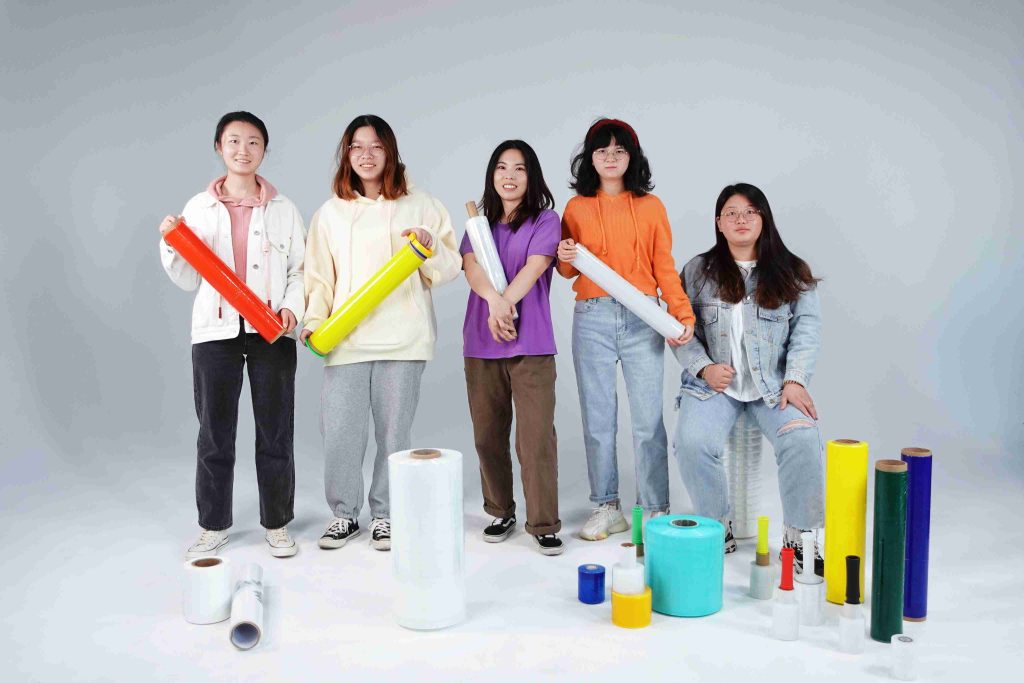
Environmental Impact of PCR Recyclable Stretch Film
As the demand for sustainable packaging solutions continues to grow, the environmental impact of PCR (Post-Consumer Recycled) recyclable stretch film is a crucial consideration. This section will explore the positive environmental aspects of using PCR recyclable stretch film and its contribution to reducing carbon footprint and waste.
Reduced Carbon Footprint
One of the key benefits of PCR recyclable stretch film is its ability to significantly reduce the carbon footprint compared to traditional stretch film made from virgin materials. The use of PCR materials, specifically low-density polyethylene (LDPE) PCR grades, in the production of stretch film results in a 35% reduction in carbon footprint. This reduction is achieved while maintaining the same film thickness as the original material. By incorporating PCR materials into the production process, manufacturers can effectively lower the environmental impact of stretch film and contribute to a more sustainable packaging industry.
Waste Reduction
PCR recyclable stretch film plays a vital role in waste reduction by utilizing post-consumer recycled materials. By incorporating 50% PCR content into the film, manufacturers can effectively divert plastic waste from landfills and promote a circular economy. This approach not only reduces the demand for virgin materials but also minimizes the overall waste generated by the packaging industry. The use of PCR recyclable stretch film helps to address the environmental concerns associated with plastic waste and supports the transition towards a more sustainable future.
Optimal Performance and Versatility
Despite its environmental benefits, PCR recyclable stretch film does not compromise performance. Through collaboration and innovation, manufacturers have developed PCR materials that offer excellent mechanical and packaging performance. The use of specialized PCR grades, such as LDPE PCR grade Ecoplast CWT 100VL, BorShape™ FX1003, and Anteo™ FK2715, ensures that the stretch film maintains its mechanical and sealing properties while incorporating high levels of recycled content. This allows for the efficient and effective use of PCR recyclable stretch film across various applications, providing optimal performance and versatility.
Conclusion
The environmental impact of PCR recyclable stretch film is significant in terms of reducing carbon footprint and waste generation. By utilizing PCR materials, manufacturers can lower the carbon footprint of stretch film production while maintaining performance and versatility. The incorporation of PCR content also contributes to waste reduction and promotes a circular economy by diverting plastic waste from landfills. PCR recyclable stretch film offers a sustainable packaging solution that aligns with the industry’s goals of reducing environmental impact and embracing a more sustainable future.
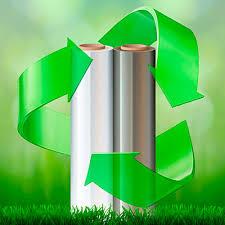
Future Trends in PCR Recyclable Stretch Film
As the demand for sustainable packaging solutions continues to grow, the future of PCR recyclable stretch film looks promising. Manufacturers and industry experts are constantly exploring new technologies and innovations to improve the performance and environmental impact of this packaging material. Here are some of the future trends we can expect to see in PCR recyclable stretch film:
Advanced Material Formulations: Manufacturers are investing in research and development to create new material formulations that enhance the properties of PCR recyclable stretch film. This includes improving its strength, flexibility, and puncture resistance while maintaining its recyclability. By using innovative additives and blending techniques, the quality and performance of PCR recyclable stretch film will continue to improve.
Increased PCR Content: As recycling technology advances, the percentage of post-consumer recycled (PCR) content in stretch film is expected to increase. Currently, many PCR recyclable stretch films contain around 50% PCR content, but this percentage is likely to rise in the future. This will further reduce the carbon footprint of the packaging while promoting the circular economy.
Enhanced Processing and Printing Capabilities: Manufacturers are focusing on developing stretch film with improved processing and printing capabilities. This includes optimizing the film’s surface properties to enhance printability, allowing for high-quality graphics and branding. Additionally, advancements in processing techniques will enable faster and more efficient production of PCR recyclable stretch film.
Customization and Specialized Applications: The future of PCR recyclable stretch film lies in its customization and application-specific formulations. Manufacturers are working towards creating stretch films tailored to meet the specific needs of different industries. For example, films with higher puncture resistance for heavy-duty applications or films with enhanced clarity for retail packaging. This customization will allow businesses to choose packaging solutions that best suit their requirements.
Collaboration and Industry Partnerships: To drive innovation and accelerate the adoption of PCR recyclable stretch film, collaboration between manufacturers, suppliers, and end-users will be crucial. By working together, industry stakeholders can share knowledge, resources, and expertise to develop sustainable packaging solutions. This collaboration will also help in creating standardized recycling processes and infrastructure to support the widespread use of PCR recyclable stretch film.
In conclusion, the future of PCR recyclable stretch film is promising, with advancements in material formulations, increased PCR content, enhanced processing capabilities, customization, and collaboration. As businesses continue to prioritize sustainability and environmental responsibility, PCR recyclable stretch film will play a vital role in meeting their packaging needs while minimizing their carbon footprint. By embracing these future trends, the packaging industry can move towards a more sustainable and circular economy.
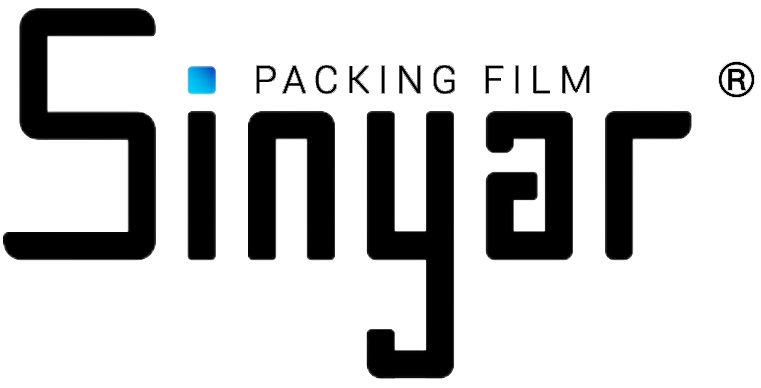

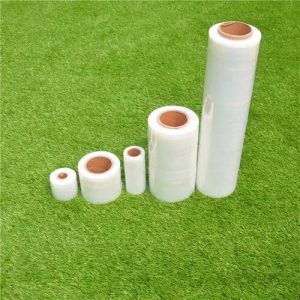
2 Responses
The shift towards eco-friendly packaging is truly inspiring, especially with innovations like PCR Recyclable Stretch Film. Its ability to maintain high performance while reducing carbon emissions is a significant step forward for the industry. Businesses adopting this film are not only improving their environmental impact but also supporting a circular economy. The versatility of PCR Recyclable Stretch Film across logistics and warehousing highlights its practicality. How can more industries be encouraged to transition to sustainable packaging solutions like this? Given the growing economic instability due to the events in the Middle East, many businesses are looking for guaranteed fast and secure payment solutions. Recently, I came across LiberSave (LS) — they promise instant bank transfers with no chargebacks or card verification. It says integration takes 5 minutes and is already being tested in Israel and the UAE. Has anyone actually checked how this works in crisis conditions?
As the global demand for eco-friendly solutions rises, PCR Recyclable Stretch Film represents a significant step towards sustainable packaging. Its use of post-consumer waste not only reduces reliance on virgin plastics but also minimizes environmental harm. The film’s ability to match the performance of traditional stretch film while cutting carbon emissions by 35% is commendable. Its applications in logistics and warehousing highlight its versatility and reliability. How can businesses further integrate this innovation to accelerate the shift towards a circular economy? German news in Russian (новости Германии)— quirky, bold, and hypnotically captivating. Like a telegram from a parallel Europe. Care to take a peek?